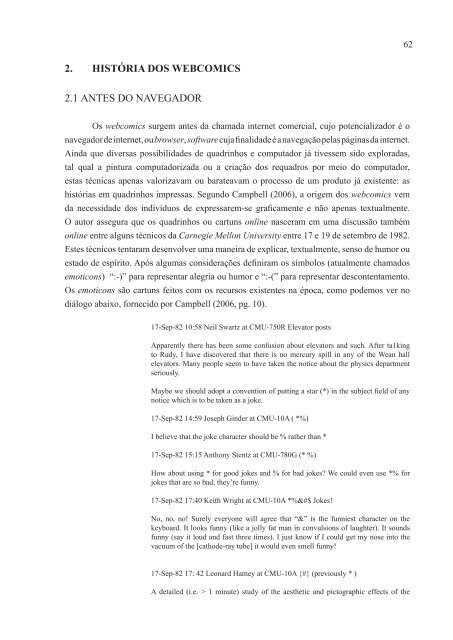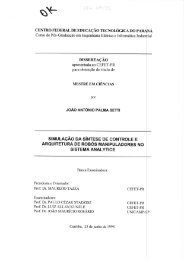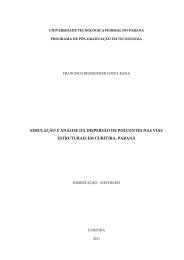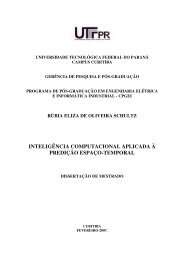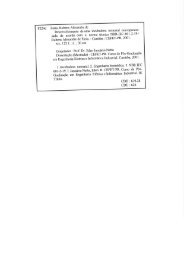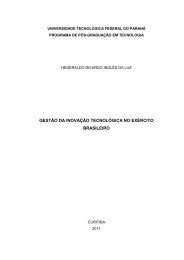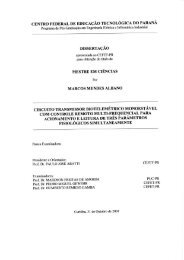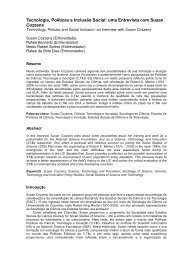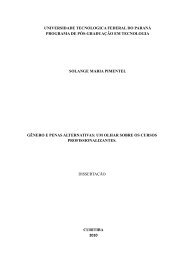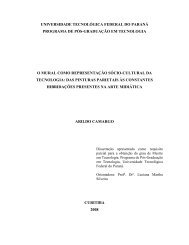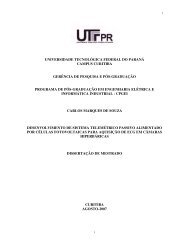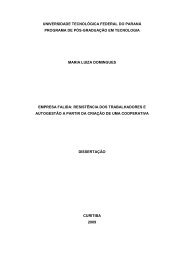tecnologia e intera - UTFPR
tecnologia e intera - UTFPR
tecnologia e intera - UTFPR
Create successful ePaper yourself
Turn your PDF publications into a flip-book with our unique Google optimized e-Paper software.
62<br />
2. História dos webcomics<br />
2.1 Antes do NAVEGADOR<br />
Os webcomics surgem antes da chamada internet comercial, cujo potencializador é o<br />
navegador de internet, ou browser, software cuja finalidade é a navegação pelas páginas da internet.<br />
Ainda que diversas possibilidades de quadrinhos e computador já tivessem sido exploradas,<br />
tal qual a pintura computadorizada ou a criação dos requadros por meio do computador,<br />
estas técnicas apenas valorizavam ou barateavam o processo de um produto já existente: as<br />
histórias em quadrinhos impressas. Segundo Campbell (2006), a origem dos webcomics vem<br />
da necessidade dos indivíduos de expressarem-se graficamente e não apenas textualmente.<br />
O autor assegura que os quadrinhos ou cartuns online nasceram em uma discussão também<br />
online entre alguns técnicos da Carnegie Mellon University entre 17 e 19 de setembro de 1982.<br />
Estes técnicos tentaram desenvolver uma maneira de explicar, textualmente, senso de humor ou<br />
estado de espírito. Após algumas considerações definiram os símbolos (atualmente chamados<br />
emoticons) “:-)” para representar alegria ou humor e “:-(” para representar descontentamento.<br />
Os emoticons são cartuns feitos com os recursos existentes na época, como podemos ver no<br />
diálogo abaixo, fornecido por Campbell (2006, pg. 10).<br />
17-Sep-82 10:58 Neil Swartz at CMU-750R Elevator posts<br />
Apparently there has been some confusion about elevators and such. After ta1king<br />
to Rudy, I have discovered that there is no mercury spill in any of the Wean hall<br />
elevators. Many people seem to have taken the notice about the physics department<br />
seriously.<br />
Maybe we should adopt a convention of putting a star (*) in the subject field of any<br />
notice which is to be taken as a joke.<br />
17-Sep-82 14:59 Joseph Ginder at CMU-10A ( *%)<br />
I believe that the joke character should be % rather than *<br />
17-Sep-82 15:15 Anthony Stentz at CMU-780G (* %)<br />
How about using * for good jokes and % for bad jokes? We could even use *% for<br />
jokes that are so bad, they’re funny.<br />
17-Sep-82 17:40 Keith Wright at CMU-10A *%&#$ Jokes!<br />
No, no, no! Surely everyone will agree that “&” is the funniest character on the<br />
keyboard. It looks funny (like a jolly fat man in convulsions of laughter). It sounds<br />
funny (say it loud and fast three times). I just know if I could get my nose into the<br />
vacuum of the [cathode-ray tube] it would even smell funny!<br />
17-Sep-82 17: 42 Leonard Hamey at CMU-10A {#} (previously * )<br />
A detailed (i.e. > 1 minute) study of the aesthetic and pictographic effects of the


